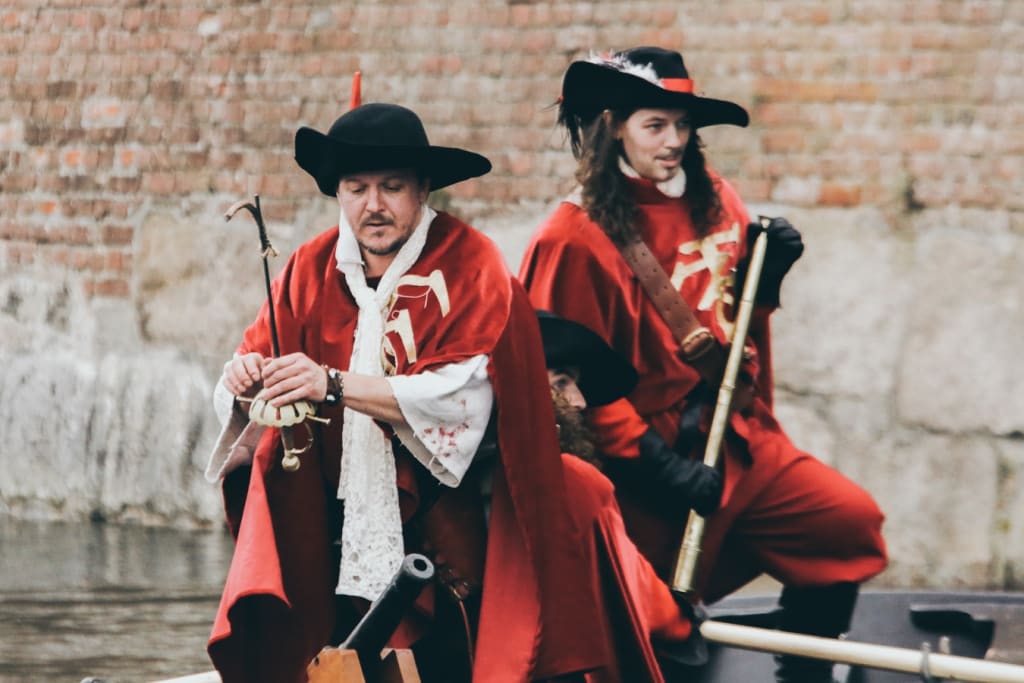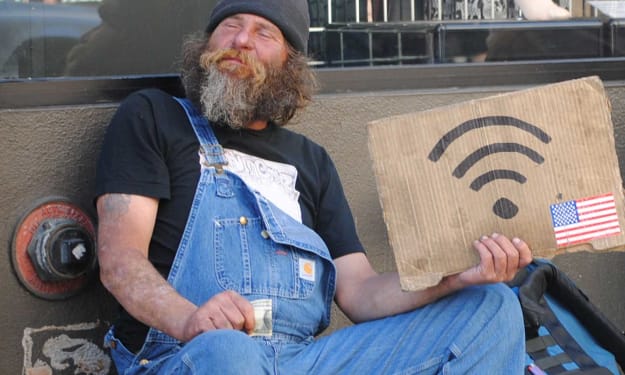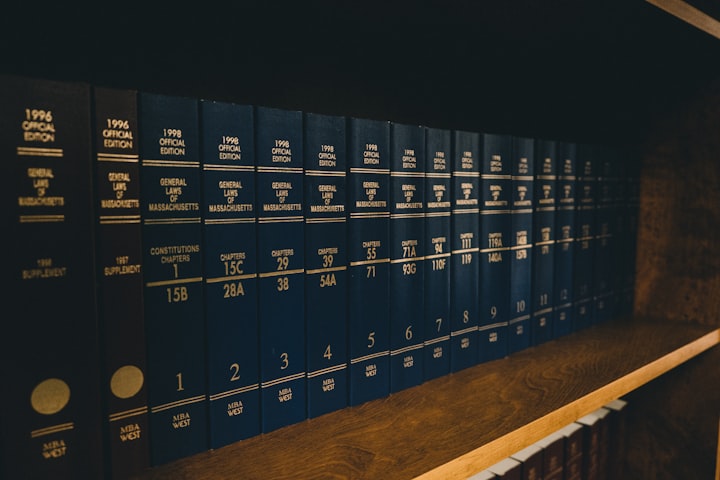
On December 1, 1884, the peaceful tropical paradise of the Hawaiian Islands became the scene of one of the world’s most audacious and daring buccaneering raids. The brazen assault was possibly the biggest heist in the illustrious history of piracy, leaving King Kalakaua, the public treasury, and local merchants robbed of their wealth with no attempt at resistance. Numerous newspaper and government reports tell the embarrassing story, now relegated to a minor footnote in contemporary history books.
As the silvered morning mist lifted, a strange vessel sighted off Diamond Head on the Island of Oahu garnered little attention. Merchant ships and whalers were common visitors to the Port of Honolulu. It was a time when the missionaries firmly established a presence in the islands, King Kalakaua ruled the Kingdom, and commerce was vigorous. A spirit of Aloha and goodwill prevailed. That quiet sun-blessed morning, none of the citizens of Honolulu imagined that the town would soon be occupied by a band of pirates that would capture the palace, sack the city, break into Bishop Bank, hold the city hostage for more than nine hours, and escape without resistance after looting more than three million dollars in gold coins and plate.
Not a shot was fired, nor a blow struck. The pirates were never captured or the treasure recovered. Factoring inflation, one dollar in 1884 is worth $29.34 cents today, the astronomical plunder now worth more than $90 million US dollars.
In mid-afternoon, rigged like a steam whaler, the mystery ship, after standing offshore, pulled anchor and set a course southward, a mere dot on the horizon. Towards sunset, fishermen noticed the ship changed course, now steering for Honolulu Harbor. Observers watching the whaler grow near thought something had gone wrong, and the ship was turning to port in need of repair as she moved slowly, then paused in the passage just outside the harbor entrance.
As dusk turned to dark, Colonel Curtis Iaukea, Collector of the Port and four of his men, set off in a small skiff to inquire if they could be of assistance. When the party did not signal or return a second boat with several sailors from the Custom’s Office was dispatched. The second boat, like the first, disappeared into the night.
Shortly before 10 PM that evening, natives, reefing fishing for a school (redfish) running on the tide, sighted five boats approaching and soon sounded the alarm that the wharf was overtaken by a throng of armed intruders.
A reporter for the Pacific Commercial Advertiser, hearing the ruckus raced to the shore to investigate the rumpus. Brown, the reporter, found himself surrounded by invaders armed with cutlass, machetes, knives, and repeating rifles and held captive, gagged, and bound to prevent him from warning the town folk.
Leaving a handful of the crew to guard Brown, the boats, and their escape route from the harbor, a band of 70 to 80 pirates briskly marched towards the city center, capturing and bounding three bystanders they encountered on their route to Nolte’s main street saloon. Astonished patrons of the coffee house were told they would come to no harm if they were quiet and cooperated.
In the meantime, a Hawaiian native that escaped capture at the beach arrived to alert George Fassett, Manager of the Royal Hawaiian Hotel of the fracas. Fassett, although inclined to dismiss the report as a hoax, warned other hotel employees to make ready to protect the nine hotel guests in residence. However, before action could be taken, the hotel staff and guests were faced with a column of men marching into the courtyard.
Daily Alta California from December 15, 1884, reported the invasion, stating, "The Captain of the Tropic Bird was playing billiards downstairs at the time, and told these circumstances: “I laughed at the idea,” he said, “and assured them the native must be lying; but I had scarcely made the remark when a column of men marched into the hotel grounds, halted some yards before the entrance, presented their rifles, standing in regular line of battle.
The leader, a tall man with a long red beard, walked deliberately towards us, a cocked pistol in his hand. We stood in the porch, sort of paralyzed. No one thought of making any resistance then, and I tell you the rifles ‘looked mighty wicked in the light of the lamps of the hotel ground.”
“Now, gentlemen,” said the Captain, ” I don’t want any foes. We have not come here to play at soldiers, and we don’t intend to get hurt. If any of yon show a weapon or make a threatening motion, we’ll fire-on yon. We have not come here to rob you; you ain’t going to be a dollar out, but we will not be interfered with.”
“Then what the deuce are you doing here, anyhow?” said Mr. Fassett.
"Never you mind," said the Captain. "Give me the keys to the house.” They gave them to him, and I was locked up with the rest. There was a sentinel posted at each entrance, and we sat in our rooms looking out of the windows, for no one knew how many men were on the island, or exactly what they wanted, for that matter.”
The leader of the pirate band, described as a muscular giant of a man, was well known by locals having worked as a steward on the good ship Mariposa. The fearless red headed steward, turned pirate, had apparently planned the caper extraordinarily well.
At this point, no one but the captured citizens became aware of the presence of the pirates in the town. The “King’s Own,” the special guard made up of 40 men whose duty it was to defend the King, slept soundly in their barracks. The daring pirates rapidly marched from the Royal Hawaiian Hotel to the gates of the Royal Palace and overcame the guards of the gates, who although issued rifles, did not have bullets for their guns. The Krupp battery, purchased the year before from the Germans, was yet to be installed and worthless. In defeat, the Kanakas lay down their weapons and surrendered without injury.
General A. B. Hayley, Commander and Chief of the Hawaiian Guard, tried in vain to rally the king’s forces as the pirates proceeded to breach the portico of the palace directly accosting Water Gibson, Minister of Hawaiian Foreign Affairs. Mr. Gibson was about to confront the leader of the pirate band when King Kalakaua, in the midst of hosting an elaborate dinner party for his ministers dismissively brushed Gibson aside and demanded the surly pirate leader tell him why such an unsightly band of seafaring brothers would violate his royal domain.
“It means, sir,” said the cryptic leader, “that we’ve just taken possession of this little kingdom of yours, and we mean to hold it, too, by God!”
Taking charge of the royal host and his guests, the pirates locked their prisoner in the palace dining room and proceeded to systematically loot the royal home of all its treasures. The Kamehamahas ceremonial feather cloak and helmet worn by the king for sacred occasions was one of the most valued items stolen. The king’s silver-plated dinner wear, and silverware were also part of the loot hauled off from the royal residence. Any item of conceivable value was removed and hauled off by the island marauders from household cooking pots to sacred artifacts.
The pirates rounded up the Public Registrar, Frank Pratt, and at gunpoint marched him to the government offices on Aeolani Hale, ordering him to open the vaults. Seizing more than $700,000 in Hawaiian silver dollars and half dollars and as much as $200,000 in American gold, the pirates sacked up the bounty and dispatched men to delivery to the ship. Next the gunmen attacked the residence of C.R. Bishop, the island’s leading banker, abducting him and forcing him to open the safe of his Merchant Street bank, relieving Mr. Bishop of more than $500,000 in greenbacks, gold coins, and silver bars.
Before the rampage ended, the pirates systematically invaded the homes of all of the islands major merchants. The business house of W. G. Irwin and Company sustained the greatest private loss. The Irwin and Company safe contained $300,000 in gold coins the firm had recently received from San Francisco. An unspecified amount of ivory was also stolen from the business owners.
The pirates also breached the gates of the home of Major Wodehouse, the British Commissioner, however, the thieves found nothing worth looting other than several cases of liquor. The Major had just received a shipment from England. When the armed gun-toting seamen stormed the home of American Minister Daggett, one of the pirates directed a personal insult to Daggett, but the Minister reported he did not recognize the bandit. Nothing was reported missing from Minister Daggett’s residence.
Before the first light of dawn appeared on the horizon, the aggressive brigadier and his men released the king and all other prisoners detained in the palace, private homes, and those seamen held shipboard. Nary a blow had been struck or a shot fired on either side. The only injuries willfully inflict were on the person of Colonel Judd, the King’s Chamberlain, whom toward the pirate leader seemed to have a personal animosity. When the pirate encountered Judd, he tore from Judd’s breast pocket valuable ship’s orders and paper’s gathered in Judd’s travels for the king. After shredding the documents, the pirate captain knocked Judd to the ground and proceeded to repeatedly kick him in the stomach. Judd later claimed not to know the seafaring criminal nor did he claim knowledge of why he was singled out for such a brutal beating.
Myths and midnight stories continue to shroud the unprecedented affair as no one ever knew the name of the pirate vessel or sighted her again, disappearing forever into the mist, cloaked in silver mist as mysteriously as she appeared.
Harbor gossip speculation grew. Observed setting sail before dawn, the ghost ship most likely made course for Tahiti or the Gilbert group after burying the plunder on a nearby island, possibly Maui. Knowledgeable seamen remarked that the ship’s captain would have wanted to be rid of the incriminating evidence should the pirate ship be challenged at sea.
The mystery has never been resolved, nor the treasure found. Without a doubt, this unknown band of bold seafarers pulled off one of most spectacular, violence-free crimes of piracy in all recorded history. No one was more embarrassed than the Kingdom of Hawaii and the United States government who realized the futility of pursuing the pirates as an accurate description and even the name of the ship or its country of registry were unknown.
A few clues surfaced as rumors flew about an unidentified ship docked in San Francisco in the weeks before the event where seamen were seen coming and going at all time of the day and night with no apparent reason for their actions. Whether the San Francisco ship sighting had any connection to the raid is another unknown in the unexplained saga of the pirates of Pacific.
About the Creator
Marlene Affeld
“A passionate writer for more than 30 years, Marlene Affeld’s passion for the environment inspires her to write informative articles to assist others in living a green lifestyle.”






Comments
There are no comments for this story
Be the first to respond and start the conversation.